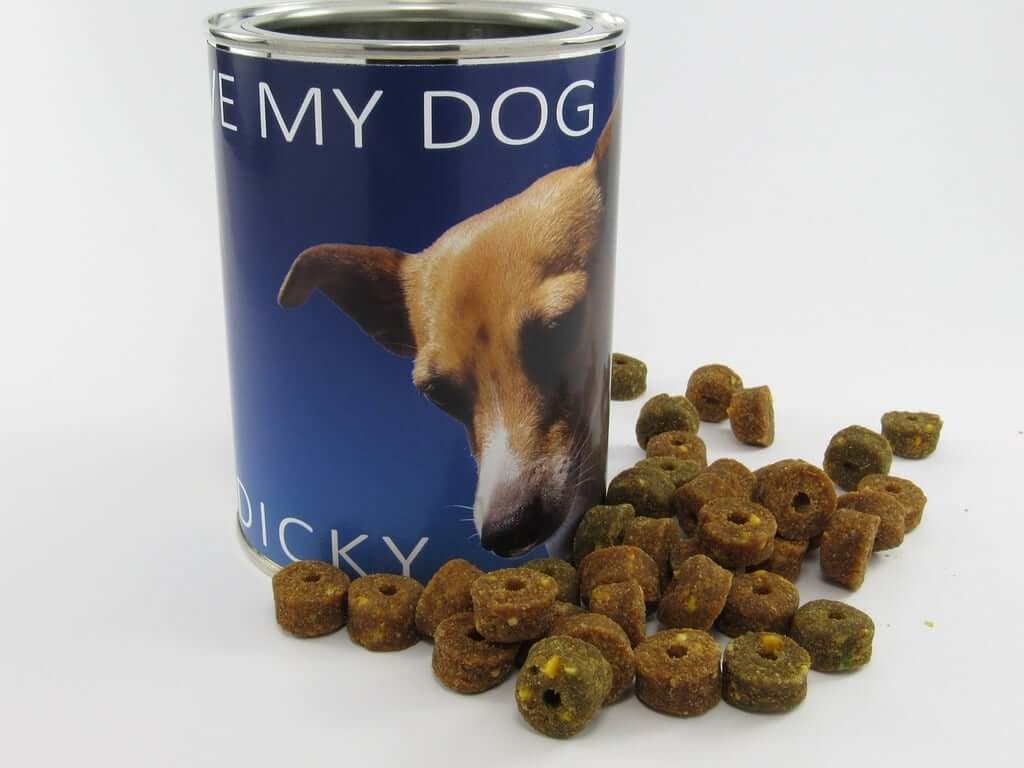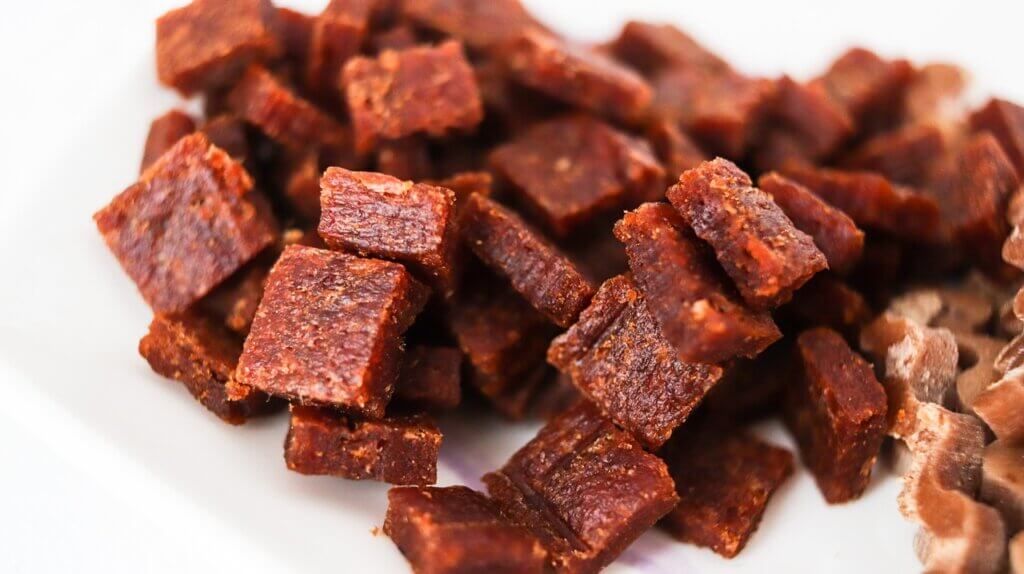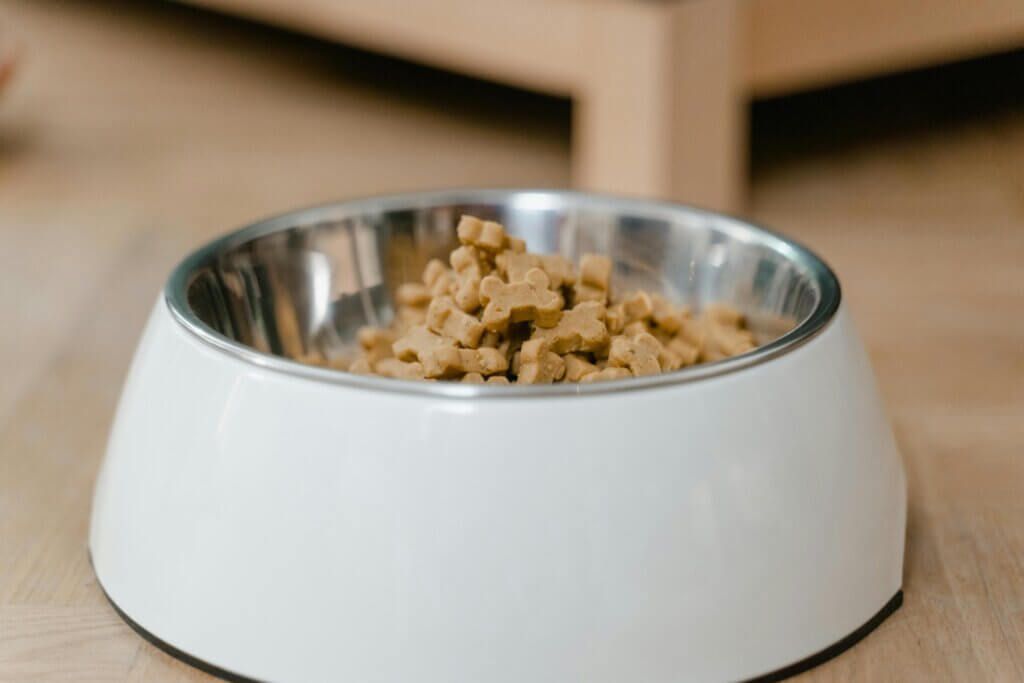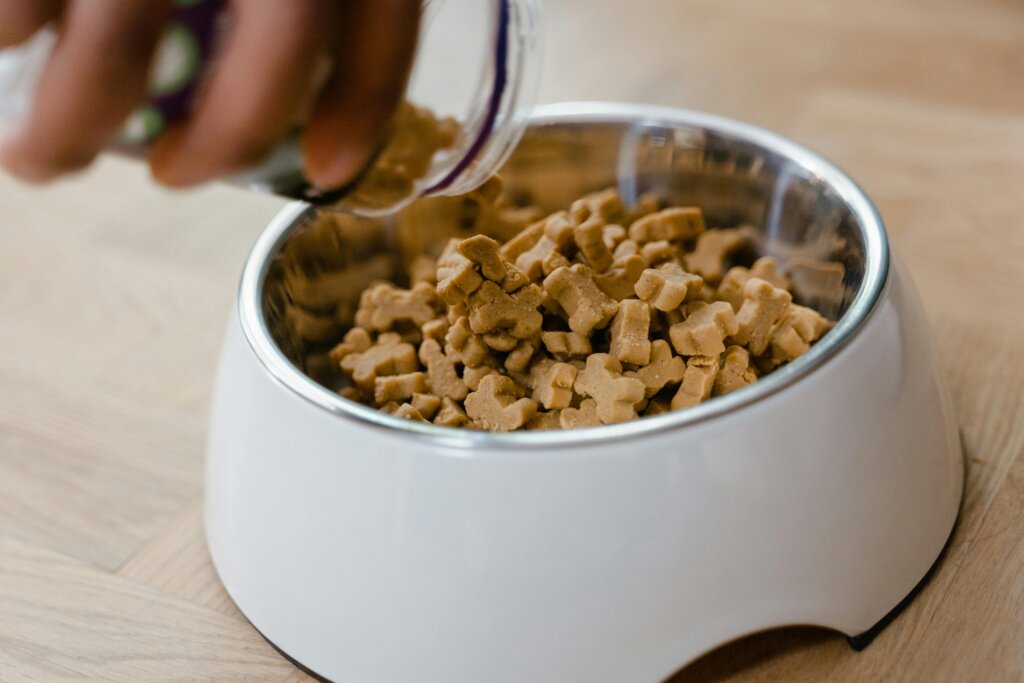How to Choose Dog Food
Choosing the right food for your dog is crucial for their health and well-being. How to Choose Dog Food is an essential topic for any pet owner, as the proper diet can significantly impact your dog’s energy levels, coat quality, and lifespan.
A well-balanced diet ensures your dog gets all the essential nutrients they need to thrive, including proteins, fats, carbohydrates, vitamins, and minerals. This blog will guide you in choosing dog food that best meets your dog’s needs.
This comprehensive guide will cover several key aspects of choosing dog food. We’ll discuss the nutritional needs of dogs at different life stages and sizes. We’ll explore the various types of dog food available, such as dry, wet, raw, and homemade diets, and weigh their pros and cons.
Understanding dog food labels is critical to making informed choices and will be thoroughly discussed. This information will enable you to make decisions with assurance about the best food for your dog, knowing precisely what you’re feeding them.
We’ll highlight special dietary needs for dogs with allergies or health issues and emphasize the importance of consulting with your veterinarian. We’ll also discuss the role of regular vet check-ups in choosing the right food for your dog, addressing concerns about the importance of professional advice in your dog’s diet.
By the end of this blog, you will thoroughly understand how to make the best food choices for your canine companion, ensuring they lead a happy and healthy life. We’ll also provide a step-by-step guide on transitioning your dog to a new diet, addressing concerns about potential digestive issues, and helping you make a smooth transition.
Understanding Your Dog’s Nutritional Needs

How to Choose Dog Food Based on Age and Size is essential for ensuring your dog gets the proper nutrients at every stage of life. Dogs’ dietary requirements vary based on age and size, and understanding these needs can help you make the best choices for your diet.
- Puppies, Adults, and Senior Dogs: Various Nutritious Needs
- Puppies require a diet rich in fat and protein to sustain their rapid development. Various nutritious needs, like DHA, are required for brain development.
- Adult dogs require a balanced diet that maintains their energy levels and supports overall health. Foods designed for adult dogs should have a good mix of protein, fats, carbohydrates, and essential vitamins and minerals.
- Since they tend to be less active, senior dogs often need fewer calories and lower fat content to prevent weight gain. Senior dog food usually contains ingredients that support joint health and easy digestion.
Small, Medium, and Large Breeds: Specific Dietary Requirements
- Small breeds have faster metabolisms and may require more foods high in calories to satisfy their energy demands. Their food should also be in smaller kibble sizes to accommodate their smaller mouths.
- Medium breeds benefit from a balanced diet that supports moderate energy levels and maintains a healthy weight. Ensure their food provides all essential nutrients in the proper proportions.
- Giant breeds often need food that supports joint health and controls weight, as they are prone to joint issues and obesity. Large-breed dog food typically contains added glucosamine and chondroitin for joint support and has fewer calories per cup to prevent excessive weight gain.
By understanding these differences, you can better choose dog food specifically formulated for your dog’s age and size, helping it stay healthy and happy throughout its life.
Types of Dog Food

How to Choose Dog Food involves understanding the various types of food available and their respective benefits and drawbacks. This section will guide you through dry, wet, raw, homemade, and prescription diets, helping you make an informed decision.
How to Choose Dog Food: Dry vs. Wet
Pros and Cons of Dry Dog Food
- Pros:
- Convenience: Dry dog food, or kibble, is easy to store and measure, making feeding times quick and straightforward.
- Cost-effectiveness: Dry food is generally more affordable than wet food, which can help manage costs, especially for larger dogs.
- Dental Health: The crunchy texture can help brush your dog’s teeth, minimizing the accumulation of tartar and plaque, which promotes better dental health.
- Long Shelf Life: Dry dog food has a longer shelf life once opened, reducing waste and the need for frequent purchases.
- Cons:
- Palatability: Some dogs may find dry food less appealing than wet food, which could challenge picky eaters.
- Moisture Content: Dry food contains less moisture, which might not be ideal for dogs that need extra hydration, such as those with certain medical conditions.
Pros and Cons of Wet Dog Food
- Pros:
- Taste and Palatability: Wet dog food is often more delicious and flavorful, making it a good option for picky eaters or older dogs with diminished taste.
- Hydration: A higher moisture content helps your dog stay hydrated. This might be very advantageous for dogs that don’t drink enough water.
- Easy to Chew: This food is ideal for dogs with dental issues, missing teeth, or trouble chewing more complex food.
- Cons:
- Cost: Wet food is typically more expensive per serving than dry food, which could be a consideration for long-term feeding.
- Shelf Life: Once opened, wet food needs to be refrigerated and used quickly to avoid spoilage.
- Dental Health: Wet food provides different dental benefits than dry food and may contribute to plaque buildup if not balanced with proper dental care.
How to Choose Dog Food: Raw, Homemade, and Prescription Diets

Raw Diets: Benefits and Risks
- Benefits:
- Natural Nutrition: Raw diets often include fresh meats, bones, vegetables, and fruits, which can be highly nutritious and palatable for dogs.
- Health Improvements: Proponents claim benefits such as shinier coats, healthier skin, cleaner teeth, and higher energy levels.
- Risks:
- Bacterial Contamination: Eating raw meat can cause health hazards in dogs and humans, as it can contain hazardous bacteria like Salmonella and E. coli if not handled properly.
- Nutritional Balance: Ensuring a nutritionally balanced raw diet can be challenging without the guidance of a pet nutritionist. Over time, imbalances may result in health problems.
- Preparation and Storage: Raw diets require careful preparation and storage to maintain freshness and prevent contamination.
Homemade Dog Food: Ensuring Nutritional Balance
- Benefits:
- Control Over Ingredients: Homemade dog food allows you to choose high-quality ingredients and tailor meals to your dog’s specific dietary needs and preferences.
- Avoiding allergens: By providing a customized diet, you can avoid ingredients that cause allergies or sensitivities in your dog.
- Challenges:
- Nutritional Expertise: Creating a balanced homemade diet requires knowledge of canine nutrition. Including all necessary nutrients is essential, which might necessitate consultation with a veterinarian or pet nutritionist.
- Time and effort: Preparing homemade meals can be time-consuming and require more effort than commercial dog food.
Prescription Diets: When and Why They Are Needed
- When Needed:
- Specific Health Conditions: Prescription diets are formulated to manage and support specific health conditions, such as kidney disease, diabetes, allergies, or gastrointestinal issues.
- Veterinary Recommendation: These diets should only be used under the guidance and recommendation of a veterinarian to ensure they address the specific health needs of your dog.
- Why They Are Important:
- Targeted Nutrition: Prescription diets provide nutrition to manage and treat particular health issues. They often contain specific ingredients or nutrient profiles beneficial for certain conditions.
- Quality Control: These diets are typically manufactured with stringent quality control procedures to guarantee uniformity and safety.
Understanding the types of dog food available helps you make informed choices tailored to your dog’s unique needs. Whether you opt for dry, wet, raw, homemade, or prescription diets, ensuring your dog receives balanced and appropriate nutrition is key to their health and happiness.
Reading Dog Food Labels
How to Choose Dog Food effectively involves understanding the information on dog food labels. This section will guide you through deciphering ingredient lists, the importance of the AAFCO statement, and recognizing quality ingredients versus fillers.
How to Choose Dog Food by Understanding Labels
Reading dog food labels can be intimidating, but it’s crucial for making informed choices about what to feed your pet. Here’s how to navigate and understand the essential components:
Deciphering Ingredient Lists
- First Ingredients Matter: The first few ingredients listed are the most significant as they make up most of the food. Look for high-quality protein sources like chicken, beef, or fish as the first ingredient.
- Avoid Generic Terms: Ingredients listed as “meat” or “meat by-products” can be vague and less desirable. Instead, choose foods that specify the type of meat.
- Check for Fillers: Ingredients like corn, wheat, and soy are often used as fillers and provide minimal nutritional value. Select whole-grain items like brown rice or oats or those with vegetables and fruits.
- Additives and Preservatives: Look for natural preservatives such as tocopherols (vitamin E) and avoid artificial preservatives like BHA, BHT, and ethoxyquin. Similarly, avoid artificial colors and flavors.
The Importance of the AAFCO Statement
- Nutritional Adequacy: The Feed Control Officials Association of America (AAFCO) provides guidelines for the nutritional adequacy of pet foods. The AAFCO statement on the label indicates that the food meets the established dietary standards.
- Complete and Balanced: Ensure the food states it is “complete and balanced” for your dog’s specific life stage (e.g., growth for puppies, maintenance for adults). This means it contains all the necessary nutrients in the proper proportions.
Recognizing Quality Ingredients vs. Fillers
- Quality Proteins: High-quality dog foods list specific animal proteins like chicken, lamb, or salmon. Whole proteins are preferable to meat meals, though named meat meals (e.g., chicken meals) are still acceptable.
- Healthy Fats: Look for named fat sources, like chicken fat or fish oil. These provide essential fatty acids that promote healthy skin and coat.
- Beneficial Carbohydrates: Quality dog foods often include fruits, vegetables, and whole grains, which supply essential fiber, vitamins, and minerals.
- Avoid Low-Quality Fillers: Ingredients like corn gluten meal, wheat gluten, and soy can be considered low-quality fillers. They offer little nutritional value and are often used for bulk food.
By understanding dog food labels, you can make more informed decisions and choose the best food for your dog’s health and well-being. Ensuring your chosen food has high-quality ingredients, meets AAFCO standards, and avoids unnecessary fillers will help keep your dog healthy and happy.
Key Nutrients to Look For

How to choose dog food rich in essential nutrients is crucial for your dog’s health. Understanding the key nutrients and their sources can help you make the best choices for your pet’s diet.
How to Choose Dog Food Rich in Essential Nutrients
Ensuring your dog’s food contains all the necessary nutrients is vital for their health and well-being. Here are the main nutrients to focus on:
Protein Sources: Meat, Fish, and Plant-Based Options
- Animal Proteins: High-quality proteins are essential for your dog’s muscle development and energy. Look for foods with meat (chicken, beef, lamb) or fish (salmon, tuna) as the primary ingredients.
- Plant-Based Proteins: While animal proteins are generally more complete, some dog foods include plant-based proteins like peas or lentils. These can supplement animal proteins but should not be the primary source.
Fats: Importance of Omega Fatty Acids
- Healthy Fats: Fats provide energy and support cell function. Look for named sources like chicken fat, fish oil, or flaxseed oil.
- Omega Fatty Acids: Consuming omega-3 and omega-6 fatty acids is essential to maintaining the functioning of your skin, coat, and brain. Sources include fish oil, flaxseed, and certain meats.
Carbohydrates: Good vs. Bad Carbs
- Good Carbohydrates: Quality carbohydrates provide energy and fiber. Look for whole grains like brown rice, oats, barley, and vegetables like sweet potatoes and peas.
- Bad Carbohydrates: Avoid foods with excessive fillers like corn, wheat, and soy. These offer minimal nutritional benefits and are often used cheaply to bulk the food.
Vitamins and Minerals: Ensuring a Balanced Diet
- Vitamins: Essential vitamins like A, D, E, and B-complex are essential for various bodily functions, including vision, skin health, and energy metabolism. These should come from natural sources in the food.
- Minerals: Calcium, phosphorus, potassium, and magnesium are necessary for bone health, muscle function, and overall metabolic processes. Ensure these are included in appropriate amounts.
- Balanced Supplements: High-quality dog food may also include chelated minerals, which the body may absorb more readily. Look for foods that ensure a complete and balanced nutritional profile.
You can choose dog food that emphasizes these essential minerals, supporting your pet’s health, vitality, and longevity. Ensuring a diet rich in quality proteins, healthy fats, good carbohydrates, and essential vitamins and minerals will help your dog thrive.
Special Dietary Needs
How to Choose Dog Food for Dogs with Special Dietary Needs involves addressing specific health concerns such as allergies, weight management, joint health, and digestive issues. Here’s how to make informed choices for your dog’s unique requirements.
How to Choose Dog Food for Dogs with Allergies
Common Allergens in Dog Food
- Common Ingredients: Dogs can be allergic to various ingredients, including common allergens such as beef, chicken, dairy, wheat, soy, and corn. Identifying these allergens can help in selecting the right food.
- Symptoms: Allergic reactions can manifest as itching, skin irritations, digestive problems, or ear infections. If you notice these symptoms, consider switching to a different diet.
Hypoallergenic Dog Food Options
- Novel Proteins: Hypoallergenic dog foods often use novel protein sources like duck, venison, or kangaroo, which are less likely to trigger allergies.
- Limited Ingredient Diets (LIDs): These foods have fewer components, lowering the possibility of an adverse reaction. Look for LIDs that list all components.
- Hydrolyzed Proteins: Some hypoallergenic foods use hydrolyzed proteins, broken down into tiny pieces that are unlikely to cause an allergic reaction.
How to Choose Dog Food for Dogs with Health Issues
Weight Management: Low-Calorie and High-Fiber Options
- Low-Calorie Foods: Overweight dogs benefit from low-calorie dog foods that help reduce weight while providing essential nutrients. Look for foods labeled for weight management.
- High-Fiber Foods: Fiber helps dogs feel full longer, aiding in weight loss. Foods high in fiber include ingredients like pumpkin, sweet potatoes, and green beans.
Joint Health: Foods High in Chondroitin and Glucosamine
- Joint Support: Large breeds of dogs and older dogs can suffer from joint issues like arthritis. Foods that include glucosamine and chondroitin can help support joint health and alleviate pain.
- Anti-Inflammatory Ingredients: Omega-3 fatty acids from fish oil and flaxseed can also reduce inflammation and support joint health.
Sensitive Stomach: Easily Digestible Ingredients
- Digestibility: Dogs with sensitive stomachs need easily digestible foods to avoid gastrointestinal upset. Ingredients like chicken, lamb, rice, and potatoes are typically gentle on the stomach.
- Prebiotics and probiotics: These can aid digestion and promote a healthy gut. Look for foods that include these beneficial ingredients to support digestive health.
Choosing the right food for your dog’s unique dietary needs involves carefully considering its health issues. By focusing on hypoallergenic options, weight management, joint health, and easily digestible ingredients, you can ensure Your dog gets the sustenance it requires without exacerbating its health problems. This tailored approach to choosing dog food will assist in giving your pet a longer, healthier life.
Quality and Safety
How to Choose Dog Food involves selecting the right type and nutritional content and ensuring the food is safe and high-quality. This section will guide you on choosing dog food from trusted brands and ensuring its safety and reliability.
How to Choose Dog Food from Trusted Brands

Researching Brands and Manufacturers
- Reputation: Select companies with a solid reputation for quality and safety. Look for companies that have been in the market for many years and possess endorsements from veterinary professionals and pet owners.
- Transparency: Trusted brands are transparent about their ingredients and manufacturing processes. They provide clear information on their ingredients and how the food is made.
Understanding Recalls and Safety Standards
- Recalls: Be aware of past recalls of dog food brands. Frequent recalls can be a red flag. The FDA website has a list of recalled pet foods.
- Safety Standards: Ensure the brand follows strict safety standards and quality control measures. Look for certifications and endorsements from recognized groups such as the Association of American Feed Control Officials or AAFCO.
How to Choose Dog Food That’s Safe and Reliable
Ensuring Freshness and Proper Storage
- Freshness: Check the packaging for signs of damage or tampering. Choose products that are well-sealed to maintain freshness and prevent contamination.
- Storage: Proper storage is essential to keeping dog food safe. To maintain quality, dry food should be kept cold and dry in an airtight container. Wet food should be refrigerated once opened and used within a few days.
Monitoring Expiry Dates
- Expiry Dates: Always check the expiration date on the packaging before purchasing. Feeding your dog expired food can lead to health issues.
- Rotation: Rotate your stock of dog food to use the oldest products first, ensuring none go past their expiration date. This practice helps maintain the food’s freshness and nutritional value.
Focusing on quality and safety can ensure your dog’s food is nutritious and safe. Researching trusted brands, understanding recalls and safety standards, ensuring proper storage, and monitoring expiration dates are all crucial steps in providing the best diet for your dog. This careful approach to choosing dog food will aid in maintaining your pet’s well-being and health.
Consulting with Professionals
Effective dog Food selection often requires professional guidance. Consulting with veterinarians ensures your dog’s diet is tailored to its needs and health conditions.
How to Choose Dog Food with Veterinary Guidance
importance of Regular Vet Check-ups
- Regular check-ups: Regular vet visits are crucial for monitoring your dog’s overall health and catching any potential issues early. These check-ups provide valuable insights into your dog’s nutritional needs.
- Health Assessments: During these visits, the vet can assess your dog’s weight, dental health, and any signs of allergies or illnesses. This information is vital for determining the best diet.
Tailoring Diet Based on Veterinary Advice
- Personalized Recommendations: Vets can provide customized recommendations based on your dog’s age, breed, size, and health status. They can suggest specific brands or types of food that are best suited for your dog.
- Special Dietary Needs: If your canine companion has certain health issues, such as allergies, obesity, or digestive problems, a vet can recommend specialized diets or prescription foods to address these concerns.
- Nutritional Guidance: Vets can help you understand the nutritional content and ingredient lists on dog food labels, ensuring you choose foods that meet your dog’s dietary requirements.
Consulting with a veterinarian ensures you make informed decisions about your dog’s diet. Regular vet check-ups provide ongoing health assessments, and tailoring the diet based on veterinary advice ensures that your dog’s nutritional needs are met effectively. This approach to choosing dog food helps keep your dog healthy, happy, and thriving.
Conclusion
Here are key tips for how to choose dog food:
Final Tips on How to Choose Dog Food
- Consider your dog’s age, size, and health conditions.
- Choose foods with quality ingredients and avoid fillers and allergens.
- Consult with your veterinarian for personalized recommendations.
Encouragement to Monitor and Adjust Diet as Needed
- Observe your dog’s health and adjust their diet if necessary.
Following these guidelines and staying attentive to your dog’s needs ensures it receives the best nutrition for a healthy and happy life.
FAQs on How to Choose Dog Food
How do I choose the right dog food for my pet?
Consider your dog’s age, size, activity level, and health conditions. Consult with your veterinarian for personalized recommendations.
What ingredients should I look for in dog food?
Look for high-quality proteins (like chicken or beef), healthy fats (such as fish oil), and beneficial carbohydrates (like sweet potatoes or brown rice).
How can I avoid common allergens in dog food?
Avoid ingredients like wheat, soy, and corn if your dog has allergies. Opt for hypoallergenic formulas with novel protein sources.
YOU MAY ALSO LIKE:
How to Soften Dog Food
How to Keep Dogs Out of Cat Food
How to Give Dog Pills Without Food
How to Get my Dog to Eat Dry Food
How to Keep Ants Out of Dog Food
How Much Does Dog Food Cost
How Long to Soak Dog Food
How Much Homemade Dog Food to Feed
How Much Wet Food to Feed a Dog
How to Transition Dog Food
How to Stop Food Aggression in Dogs Towards Other Dogs
How many cups of food should I feed my dog?
How to Stop Food Aggression in Dogs
How Many Cups in a Pound of Dog Food
How Long Does it Take a Dog to Digest Food
Why is My Dog Always Hungry
How Much Protein is in Dog Food?
How to Make Dog Food
how long to feed dog puppy food
What is The Cost to Make Homemade Dog Food?
How to Make Homemade Raw Dog Food
How to Make Homemade Dry Dog Food
How to Prepare Dog Food at Home for Senior Dogs
How to Train a Dog That is Not Food-Motivated
How Much Food Should I Feed
How To Store Dog Food
How Much Time Can a Dog Survive Without Consuming Water
How Long Can a Dog Survive Without Food?

